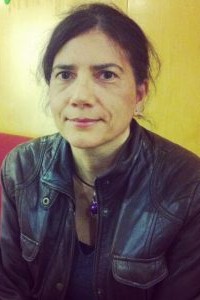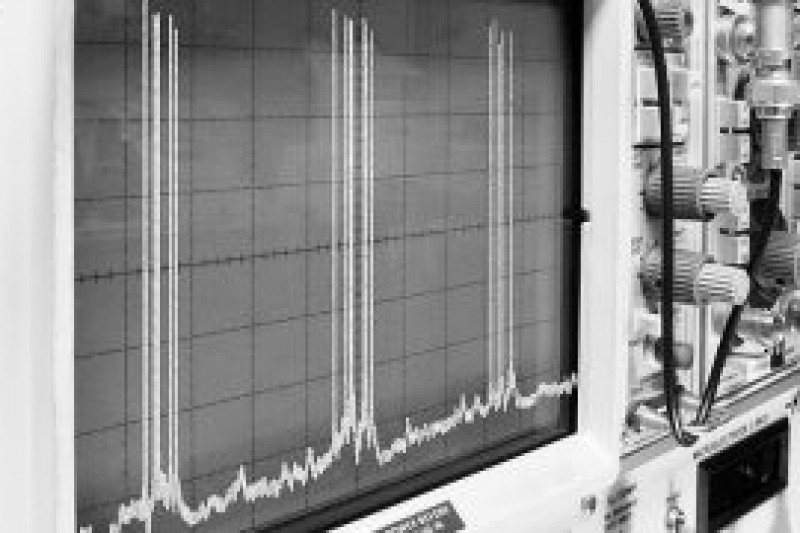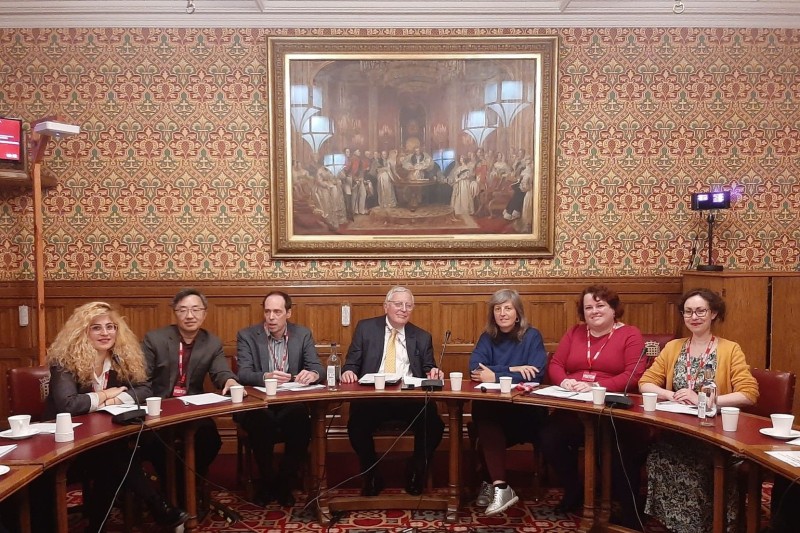
Erasmus + Programme: Visit to the Sanchez-Vives Lab at the Institute for Biomedical Research IDIBAPS-Barcelona
What is consciousness? In the traditional view, consciousness is a state of self-awareness in which the brain can experience perceptions; but which suddenly disappears in anaesthesia, coma or dreamless sleep. However, the common belief that there is sharp edge between an underlying unconscious state and consciousness is being challenged by new neurophysiological findings and theoretical models.
Is an isolated network of cells, a piece of mammal brain confined in a dish (an in vitro preparation) “conscious of itself”? if so, how can this be demonstrated? And by extension, is it a complex neuronal network model, capable of emulating the causal computations of such neuronal circuit, able to perform conscious functions?
 Professor Maria-Victora Sanchez-Vives
Professor Maria-Victora Sanchez-VivesThese and connected topics were the focus of the discussions during Dr Emili Balaguer-Ballester’s visit last June to the Sanchez-Vives Lab, within the Institute for Biomedical Research IDIBAPS; located in the core of the city of Barcelona, in the picturesque carrer Rosello. The visit was supported the Erasmus + Funds for Staff Mobility through Global BU at Bournemouth University.
Professor Maria-Victora Sanchez-Vives is the leader of associated project within the large Human Brain Project initiative, a FLAGSHIP FET 2020 project, spanning for 10 years and involving the over 100 European Universities. Professor Sanchez-Vives co-supervises a Bournemouth University PhD student, Mr Roman Arango-Cabrera, whose research focuses on studying the rhythms of the spontaneous neuronal activity in isolated cortical slices in vitro.
Dr Balaguer-Ballester was particularly keen to know directly from the team of experienced postdoctoral researchers the experimental process leading to the datasets that Roman has been analysing. Likewise, he was keen to explain to Professor Sanchez-Vives and her team the new ideas that being designed in Bournemouth.
Their recording techniques have been devised for identifying the spatiotemporal propagation of extracellular potentials through the neuronal network. During Dr Balaguer-Ballester’s short period in Barcelona, the group discussed the design of a new experiment, a variant of the current state-of-the-art recording system by enhancing the precision of the registrations. This new experiment can serve as a feasibility test for a new algorithms developed in Bournemouth University.
 Measure Pulse and Transition Characteristics
Measure Pulse and Transition CharacteristicsCommenting on his visit, Dr Balaguer-Ballester said: “The visit was successful in every way, I learned a lot and enjoyed very much the atmosphere in the lab during the four days I spent with them. I am very grateful to Mavi, Vanessa and to every member of the Lab for the invitation and for the great support.”
In summary, in the quest for a biophysical substrate of consciousness, a key milestone is the understanding of spontaneous activity propagation in isolated cortical networks; which is the topic of this training visit supported by the Erasmus + Mobility funds. The boundary between conscious and unconscious states seems to be increasingly blurred with each new advance in the area; proposing exciting ethical challenges for the following decade.
Maria V. Sanchez-Vives, Marcello Massimini, Maurizio Mattia. 2017. Shaping the Default Activity Pattern of the Cortical Network. Neuron, 94(5): 993-1001.



